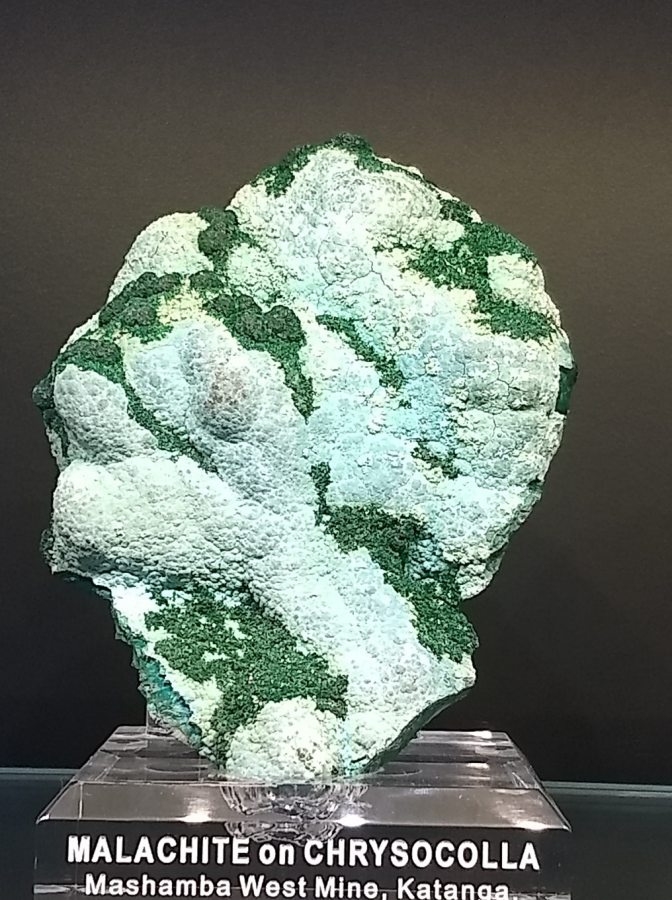Mineral Spotlight: Malachite
Malachite is a beautiful mineral known for its intense green color. Thousands of years ago, it was also ground into a powder and used as a coloring pigment. Malachite is one of the oldest known copper ores and often polished and carved into jewelry or ornaments. Banded malachite is commonly found in Africa and features ring patterns.
Malachite is always green but ranges from extremely dark, almost black, to pastel or bright green. The forms of malachite can range from fibrous needles, to “botryoidal form,” which resembles a bunch of grapes, to long, rounded stalactitic masses.
Malachite forms when water seeps through copper ores, dissolving the copper and other minerals containing carbon, such as calcite. The carbon and copper in the water eventually settle out and crystalize into malachite. The copper gives malachite a high specific gravity, and malachite is one of very few green minerals that fizz in hydrochloric acid. These features make Malachite easily distinguishable.
Malachite is generally found together with azurite, which is a blue copper mineral. Sometimes malachite and azurite form mixed or banded together, becoming what is called “Azure-Malachite.” Occasionally malachite will take over azurite crystals, where the original azurite shape remains but it is chemically altered into malachite.
In the past, people often attributed magical power to this mineral and made it into amulets. Some ancient civilizations wore polished, banded malachite believing that it would give them protection from evil. Malachite has also been thought to increase the wealth of its owner, and was stored alongside money to bring good luck.
You can see many pieces of these minerals inside the copper case in the Bruce Dice Mineralogical Museum, open every Wednesday, Thursday and Friday from 12:30-4 p.m.








